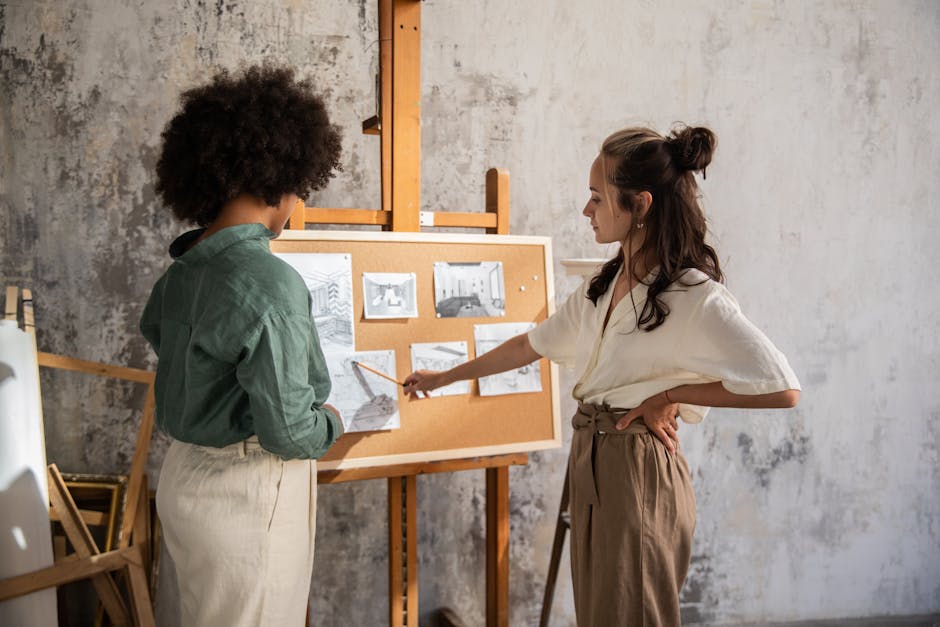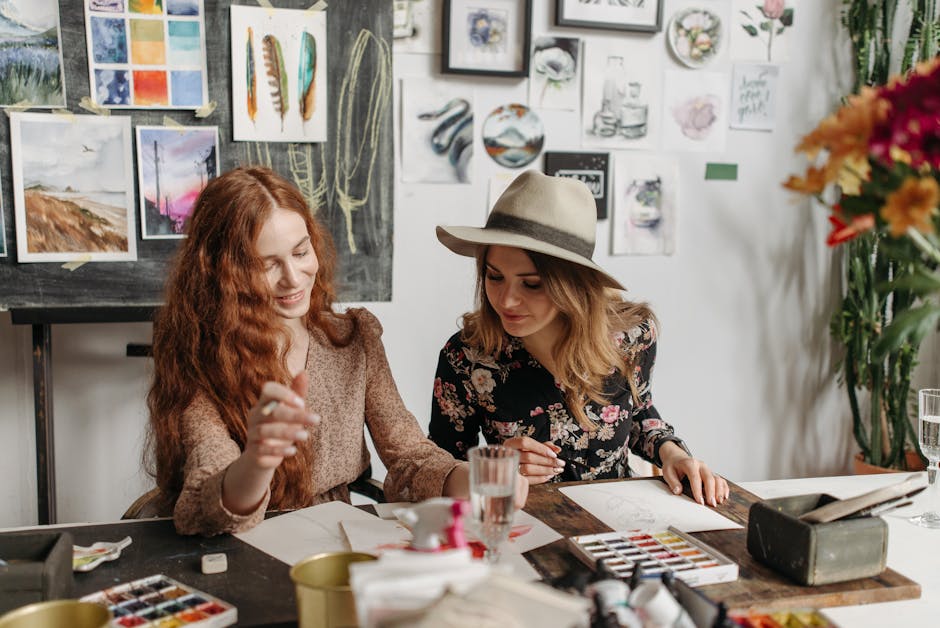Historical Female Artists
Mary Beale broke barriers in the 17th century art world, earning financial independence as her family's breadwinner. Her paintings captured intimate portrayals of subjects, friends, and family. Beale's husband Charles managed studio logistics, challenging typical gender roles. Her belief that women should be "wife and friend, but not a slave" shone through her work.
Emily Mary Osborn's "Nameless and Friendless" depicted the struggles of single women in Victorian society. The painting's details highlighted the uphill battle women faced:
- A young orphaned woman offers her painting to a dealer
- Men in the room sneer or leer at her
- Her mud-splattered skirt suggests desperation
Osborn used her art to challenge barriers and actively campaigned for education and suffrage reforms.
Mary Cassatt, an American Impressionist, brought women's stories to the forefront. She depicted women beyond domestic roles, capturing the depth of their lives. Cassatt's exploration of motherhood and suffrage themes carved out space for women's voices in the art world.
These pioneers created a rich history through their fearless approach, advocating for gender equality through their art. Their work reflected their drive to redefine womanhood and challenge assumed roles at a foundational level.
Contemporary Female Artists
Modern artists like Yayoi Kusama, Lubaina Himid, and Jo Spence continue to challenge norms and provoke thought through their work.
Yayoi Kusama transforms art into a boundless universe. Her bold polka dots and vivid installations invite viewers into a world where personal trauma meets cosmic wonder. Kusama's work examines gender dynamics and offers an escape from patriarchal confines.
Lubaina Himid, a champion of black feminism, uses art to challenge the absence of people of color in mainstream narratives. Her pieces critique superficial attempts at integration while advocating for genuine cultural contribution and self-defined identity.
Jo Spence's photographic montages serve as commentary on women's roles in society. Her work with the Hackney Flashers collective underscores how art can raise consciousness about social issues.
These artists construct worlds where identity, justice, and gender intertwine to create fresh perspectives. Their work continues the legacy of using art as a vehicle for personal and collective change.

Art as a Tool for Social Change
Art has long been a powerful tool for social change, both reflecting society and inspiring transformation. Artists use their creativity to reshape the world around them.
Frida Kahlo's self-portraits merged personal struggles with broader social themes, challenging stereotypes about gender and identity. Her unapologetic depiction of disabilities and unconventional lifestyle defied societal norms, making her an advocate for gender equality.
Modern artist Alia Ali explores identity and visibility through photographs where subjects are enveloped in fabrics that obscure gender or racial identifiers. Her work challenges viewers to confront their biases and preconceptions.
Films like "Hidden Figures" and "Mulan" celebrate untold stories and break conventional molds, inspiring audiences to reconsider women's roles in various fields. These stories encourage viewers to rethink past assumptions and future possibilities.
"Art becomes a call to action against inequality, insisting on seeing the world not just as it is, but as it could be."
Art as a medium of change goes beyond aesthetics; it's about storytelling and breaking barriers. Whether through painting, photography, or film, art becomes a call to action against inequality, insisting on seeing the world not just as it is, but as it could be.
Organizations Supporting Women in Art
Organizations like Herventure play a crucial role in empowering female artists. They offer:
- Mentorship
- Educational workshops
- Exhibition opportunities
These initiatives nurture talent and propel women into spaces where their creative voices can thrive.
Mentorship provides aspiring artists with guidance from seasoned professionals, offering insight, experience, and confidence. Educational workshops broaden skillsets and cultivate an environment for artistic exploration and innovation.
Herventure offers platforms for exhibitions and publications, critical for artists seeking visibility. By curating spaces where female artists can present their work, these initiatives challenge cultural and institutional biases.
Art collectives function as collaborative ecosystems that encourage solidarity among female artists. These collectives become hubs of creative exchange, where collaboration supersedes competition. By pooling resources and sharing knowledge, they empower women to express themselves on their own terms.
Together, organizations like Herventure and art collectives inspire change within the art world. Through nurturing, advocating, and showcasing female artists, they contribute to a more equitable artistic landscape.

Art has long been a powerful force for change, with women artists using their creativity to challenge norms and inspire progress. Their work not only reflects their experiences but also calls for a more inclusive future, making art a vital tool for empowerment and transformation.
- Beale M. Observations. Unpublished manuscript; c. 1650s.
- Osborn EM. Nameless and Friendless. 1857. Tate Britain, London.
- Riley B. The Hermaphrodite. In: The Artist's Eye. London: National Gallery; 1973.
- Himid L. The Carrot Piece. 1985. Tate, London.






















